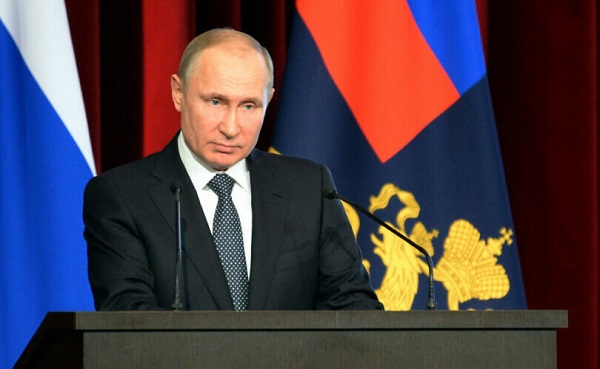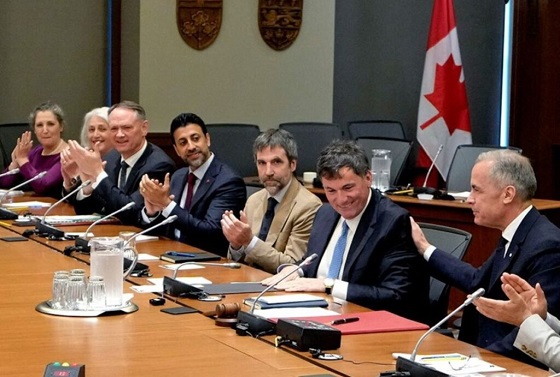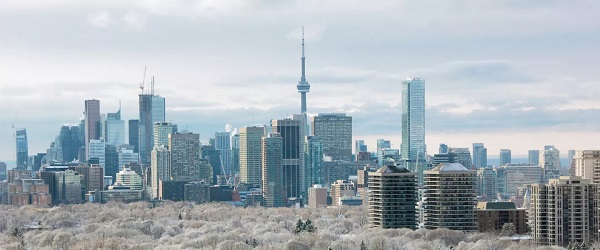Uncategorized
Southern Californians battered by wildfires that killed 2

MALIBU, Calif. — Just a day ago, Arik Fultz was feeding the horses on his 40-acre ranch near Malibu.
Now, after wildfires roared through parts of Southern California, there’s nothing left of his ranch but charred remains. His family and his 52 horses survived. But two houses, two barns, three trailers and decades of accumulated possessions are gone.
“It just doesn’t feel real that it’s all gone,” he said.
Southern Californians like Fultz battered by the wildfires got to take a breath Saturday and take store of what the wildfires did to them. A lull in fierce winds that drove a pair of destructive fires allowed firefighters to make their first real progress in stopping the blazes.
But a sustained stretch of vicious winds, and the strong possibility of a new round of troubles, were set to start Sunday.
Two people were found dead amid the larger of the two fires, Los Angeles County sheriff’s Chief John Benedict said Saturday.
The severely burned bodies were discovered in a long residential driveway on a stretch of Mulholland Highway in Malibu, where most of the surrounding structures had burned.
Benedict did not have any details about the identities of the dead. He said detectives were investigating.
The deaths came as authorities in Northern California announced the death toll from a massive wildfire there has reached 23 people, bringing the statewide total to 25.
Southern California’s fire had destroyed at least 150 homes, from Malibu mansions to modest dwellings in inland canyon communities.
No growth was reported Saturday on the larger of the two fires, which had torched 109 square miles (282 square
Progress also came against the smaller fire, prompting Ventura County officials to allow people in a handful of communities to return to their homes.
Hundreds of thousands across the region remain under evacuation orders, and could stay that way for days as winds pick up again.
Fire burned in famously ritzy coastal spots like Malibu, where Lady Gaga, Kim Kardashian West, Guillermo del Toro and Martin Sheen were among those forced out of their homes amid a citywide evacuation order.
“It was way too big a firestorm,” said Lani Netter, whose Malibu home was spared while her
The flames also stretched into the suburb of Thousand Oaks, a city of 130,000 people that just a few days ago saw 12 people killed in a mass shooting at a country music bar.
Wildfire raged on both sides of the city still in mourning, where about three-quarters of the population are under evacuation orders that officials urged them to heed.
“We’ve had a lot of tragedy in our community,” said Ventura County Supervisor Linda Parks, whose district includes Thousand Oaks. “We don’t want any more. We do not want any more lives lost.”
At the Fultz ranch near Malibu, all of the 52 horses survived after a wild scramble to save them.
Fultz’s mother, 61-year-old Tricia Fultz, said everyone expected the fire to stay well south of their property, but shifting winds forced them to take the horses out to open pastures as quickly as they could.
Three were still in their pens when the adjacent barn caught fire, and Tricia Fultz just had to open the pens, burning her hands and hoping for the best.
She, her husband and six others rode out the fire in a tunnel a short distance up the road as the fire burned the hillsides above and all around them.
“It’s so surreal because it’s so dark, and when we’re in the tunnel you can’t see anything,” Tricia Fultz said. “There was so much burning and so much black.”
The fire hopscotched around the Oak Park
The home for 22 years of Bengston and his wife, Ramona, was the only house on his block that burned. And it burned everything.
“It’s all gone,” he said softly as he sifted through the remains. “It’s all gone.”
The hardest to lose were the photos and the mementos handed down through the family — a cigar box that belonged to his great-grandfather; the handcuffs his father carried in World War II.
“We’re somewhat devastated,” Bengston said. “Still a little bit numb.”
___
Dalton reported from Los Angeles.
Jonathan J. Cooper And Andrew Dalton, The Associated Press
Uncategorized
Cost of bureaucracy balloons 80 per cent in 10 years: Public Accounts

The cost of the bureaucracy increased by $6 billion last year, according to newly released numbers in Public Accounts disclosures. The Canadian Taxpayers Federation is calling on Prime Minister Mark Carney to immediately shrink the bureaucracy.
“The Public Accounts show the cost of the federal bureaucracy is out of control,” said Franco Terrazzano, CTF Federal Director. “Tinkering around the edges won’t cut it, Carney needs to take urgent action to shrink the bloated federal bureaucracy.”
The federal bureaucracy cost taxpayers $71.4 billion in 2024-25, according to the Public Accounts. The cost of the federal bureaucracy increased by $6 billion, or more than nine per cent, over the last year.
The federal bureaucracy cost taxpayers $39.6 billion in 2015-16, according to the Public Accounts. That means the cost of the federal bureaucracy increased 80 per cent over the last 10 years. The government added 99,000 extra bureaucrats between 2015-16 and 2024-25.
Half of Canadians say federal services have gotten worse since 2016, despite the massive increase in the federal bureaucracy, according to a Leger poll.
Not only has the size of the bureaucracy increased, the cost of consultants, contractors and outsourcing has increased as well. The government spent $23.1 billion on “professional and special services” last year, according to the Public Accounts. That’s an 11 per cent increase over the previous year. The government’s spending on professional and special services more than doubled since 2015-16.
“Taxpayers should not be paying way more for in-house government bureaucrats and way more for outside help,” Terrazzano said. “Mere promises to find minor savings in the federal bureaucracy won’t fix Canada’s finances.
“Taxpayers need Carney to take urgent action and significantly cut the number of bureaucrats now.”
Table: Cost of bureaucracy and professional and special services, Public Accounts
| Year | Bureaucracy | Professional and special services |
|
$71,369,677,000 |
$23,145,218,000 |
|
|
$65,326,643,000 |
$20,771,477,000 |
|
|
$56,467,851,000 |
$18,591,373,000 |
|
|
$60,676,243,000 |
$17,511,078,000 |
|
|
$52,984,272,000 |
$14,720,455,000 |
|
|
$46,349,166,000 |
$13,334,341,000 |
|
|
$46,131,628,000 |
$12,940,395,000 |
|
|
$45,262,821,000 |
$12,950,619,000 |
|
|
$38,909,594,000 |
$11,910,257,000 |
|
|
$39,616,656,000 |
$11,082,974,000 |
Uncategorized
Trump Admin Establishing Council To Make Buildings Beautiful Again


From the Daily Caller News Foundation
By Jason Hopkins
The Trump administration is creating a first-of-its-kind task force aimed at ushering in a new “Golden Age” of beautiful infrastructure across the U.S.
The Department of Transportation (DOT) will announce the establishment of the Beautifying Transportation Infrastructure Council (BTIC) on Thursday, the Daily Caller News Foundation exclusively learned. The BTIC seeks to advise Transportation Secretary Sean Duffy on design and policy ideas for key infrastructure projects, including highways, bridges and transit hubs.
“What happened to our country’s proud tradition of building great, big, beautiful things?” Duffy said in a statement shared with the DCNF. “It’s time the design for America’s latest infrastructure projects reflects our nation’s strength, pride, and promise.”
“We’re engaging the best and brightest minds in architectural design and engineering to make beautiful structures that move you and bring about a new Golden Age of Transportation,” Duffy continued.
Mini scoop – here is the DOT’s rollout of its Beautifying Transportation Infrastructure Council, which will be tasked with making our buildings beautiful again. pic.twitter.com/
9iV2xSxdJM — Jason Hopkins (@jasonhopkinsdc) October 23, 2025
The DOT is encouraging nominations of the country’s best architects, urban planners, artists and others to serve on the council, according to the department. While ensuring that efficiency and safety remain a top priority, the BTIC will provide guidance on projects that “enhance” public areas and develop aesthetic performance metrics.
The new council aligns with an executive order signed by President Donald Trump in August 2025 regarding infrastructure. The “Making Federal Architecture Beautiful Again” order calls for federal public buildings in the country to “respect regional architectural heritage” and aims to prevent federal construction projects from using modernist and brutalist architecture styles, instead returning to a classical style.
“The Founders, in line with great societies before them, attached great importance to Federal civic architecture,” Trump’s order stated. “They wanted America’s public buildings to inspire the American people and encourage civic virtue.”
“President George Washington and Secretary of State Thomas Jefferson consciously modeled the most important buildings in Washington, D.C., on the classical architecture of ancient Athens and Rome,” the order continued. “Because of their proven ability to meet these requirements, classical and traditional architecture are preferred modes of architectural design.”
The DOT invested millions in major infrastructure projects since Trump’s return to the White House. Duffy announced in August a $43 million transformation initiative of the New York Penn Station in New York City and in September unveiledmajor progress in the rehabilitation and modernization of Washington Union Station in Washington, D.C.
The BTIC will comprise up to 11 members who will serve two-year terms, with the chance to be reappointed, according to the DOT. The task force will meet biannually. The deadline for nominations will end Nov. 21.
-

 Business2 days ago
Business2 days agoWhy Does Canada “Lead” the World in Funding Racist Indoctrination?
-

 Media2 days ago
Media2 days agoThey know they are lying, we know they are lying and they know we know but the lies continue
-

 Focal Points2 days ago
Focal Points2 days agoThe West Needs Bogeymen (Especially Russia)
-

 Censorship Industrial Complex1 day ago
Censorship Industrial Complex1 day agoUS Condemns EU Censorship Pressure, Defends X
-

 Dan McTeague1 day ago
Dan McTeague1 day agoWill this deal actually build a pipeline in Canada?
-

 Opinion1 day ago
Opinion1 day agoThe day the ‘King of rock ‘n’ roll saved the Arizona memorial
-

 Bruce Dowbiggin15 hours ago
Bruce Dowbiggin15 hours agoWayne Gretzky’s Terrible, Awful Week.. And Soccer/ Football.
-

 Banks1 day ago
Banks1 day agoTo increase competition in Canadian banking, mandate and mindset of bank regulators must change










